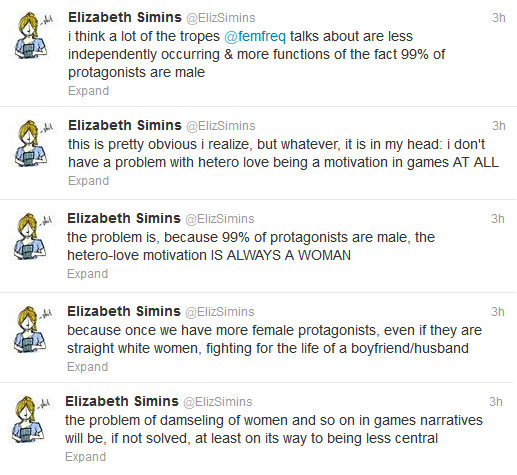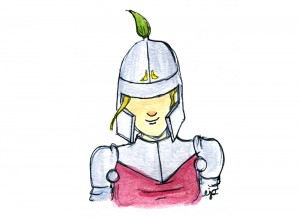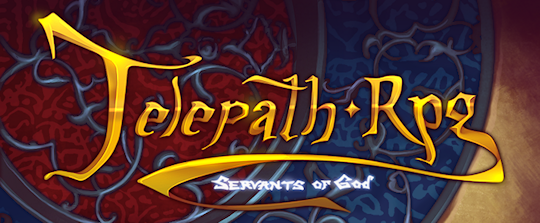Back in October, you may recall me writing a bit about the challenges I’ve faced in writing female lead characters. Today, I’d like to talk a bit more about why I have chosen to have female leads–and in the process, hopefully convince some of my fellow developers to follow suit.
Background
We tend go through life with a lot of unconscious assumptions about “the way women are” and “the way men are” ingrained in us. Inevitably, we are shaped by our social norms–and just as surely, we are shaped by the stories that we tell each other to justify those norms. There are observed psychological quirks in the human brain that play into this dynamic, things that show up over and over in studies, things with names like expectation confirmation and the just world hypothesis.
The bottom line is, it takes work–actual conscious effort–not to fall back on stereotypes when interacting with, thinking about, or writing about people from different groups. But that effort is important to make. The lazy route, merely writing what is expected, leads to predictable stories and characters that are nigh indistinguishable from the characters in other tales.
That need for effort applies equally to all characters regardless of their sex; however, the stakes are higher for those of us who would write female protagonists into our games. Female leads are comparatively rare, and are therefore subject to greater scrutiny when they do appear (see e.g. Lara Croft). There are a lot of well-intentioned people out there who will be sniffing around for any bad assumptions I’ve let slip through in my own attempts at writing female leads, and I fully expect that they will (quite justifiably) hold my feet to the fire for any such mistakes.
The question arises: is it worth all that extra pressure? Why not just write another game starring a male lead? My reasons follow.
Reason 1: Realism
This first reason might seem counter-intuitive at first–but if it does, it’s because our intuition doesn’t have a very strong grasp of human history. Political leaders, warriors, scientists: name a field of human endeavor, and there have been women there participating right alongside men.
There are numerous recorded instances of actual women from history doing things that one might mistakenly think were solely the province of men. Like commanding fleets of pirates. Or commanding armies. Or serving as a cavalier in the royal army. Or exploring new lands. Or leading revolutions.
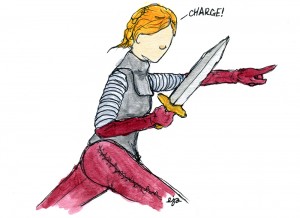 And it wasn’t just limited to isolated examples like Boudica, Jeanne Baré or Sarah Emma Edmonds, either. There is actually a pretty solid archaeological record establishing that women warriors were not just a thing, but a really common thing going back thousands of years. Prehistoric women were not just gatherers, but hunters, too. Women warriors fought among the vikings. Women competed as Roman gladiators. Women served as samurai in feudal Japan. One out of every five warriors from ancient Scythia were women.
And it wasn’t just limited to isolated examples like Boudica, Jeanne Baré or Sarah Emma Edmonds, either. There is actually a pretty solid archaeological record establishing that women warriors were not just a thing, but a really common thing going back thousands of years. Prehistoric women were not just gatherers, but hunters, too. Women warriors fought among the vikings. Women competed as Roman gladiators. Women served as samurai in feudal Japan. One out of every five warriors from ancient Scythia were women.
Sometimes they disguised themselves as men; other times, they simply wore the same armor as men did. In either event, because female warriors wore the same armor and used the same weapons as males, the only way to confirm that any given set of warrior bones belongs to a female is to perform DNA testing. DNA testing of bones is a relatively new technology, and consequently, archaeologists have historically underestimated the number of warrior women populating the annals of human history. For example:
DNA tests on the 2,000-year-old bones of a sword-wielding Iranian warrior have revealed the broad-framed skeleton belonged to woman, an archaeologist working in the northwestern city of Tabriz said on Saturday.
“Despite earlier comments that the warrior was a man because of the metal sword, DNA tests showed the skeleton inside the tomb belonged to a female warrior,” Alireza Hojabri-Nobari told the Hambastegi newspaper.
So, with this background, ask yourself: is it “realistic” to make games where all the generals, all the pirates, all the rulers, all the front-line fighters are men? You might say that this depends on the society portrayed in the game world–but to a large extent, it really doesn’t. Different societies from different periods of history have had different mores and different rules governing who could fight–and yet, if you look at the links above, there are women fighters represented in virtually every society, including the ones where women explicitly were not supposed to fight at all! Heck, there are numerous documented instances of women risking their lives to disguise themselves as men and fight just in the U.S. Civil War alone. Female rulers are everywhere in history, too, including societies rigidly stratified by gender roles. Society’s rules mattered, sure, but they didn’t keep determined women from participating.
The bottom line: no matter how devastatingly sexist the society I choose to portray in my games, no matter how combat-heavy the mechanics, there is no historical precedent for excluding women from leading roles. The protagonists of Telepath Tactics are female in no small part because it’s just not realistic for a world to have no female heroes. It’s time that the world of Telepath had a few.
Reason 2: It defuses gender stereotypes and improves storytelling
So! Tropes Versus Women in Games. Some of you love it; some of you hate it. I’m not going to stake out a position on that here. What I will say, though, is that no matter how you feel about Anita Sarkeesian or the way she talks about games, and no matter what you think should be done in response to the things she criticizes, those tropes she mentions are inarguably real. I don’t know how anyone can sit through minute after minute of footage of games using the exact same tropes over and over again and then still deny that those tropes exist. They obviously exist. Further, it’s also pretty obvious that the use of these tropes is upsetting to a lot of people.
“So what should we do?” you might say. “Just stop using them? Cease to tell stories that we’ve been telling for centuries?” Well, as a matter of fact, we could–that might be a pretty good example of the whole “stop being lazy and just leaning on your default assumptions” thing I mentioned at the start of the article. There are worse things than striking out in new narrative directions and telling new stories.
But there’s another solution, one which doesn’t require us to abandon old tropes wholesale. Elizabeth Simins (whom you may know as the artist behind Bad At Games) made an interesting point about Tropes Versus Women in Games on Twitter the other day, shortly after the release of its second episode. I’m going to start by quoting her; I’ve arranged the tweets from top to bottom for readability:
Elizabeth is right: the problem isn’t with the tropes themselves. The kidnapping of a lover or a loved one, just to pick one example, works well as a source of character motivation regardless of the protagonist’s gender. It neatly establishes the antagonists of the story. It is immediately relatable and emotionally powerful. In short, it is exactly the sort of thing that is effective for just about any audience.
Fundamentally, it isn’t the guts of this trope (the kidnapping and rescuing dynamics) that are upsetting to people; it’s the inflexibility with which the roles are applied to characters of different genders. Why is the rescuer always a guy? Why can’t it ever be a woman rescuing her boyfriend (or girlfriend, for that matter)? That’s where the gender stereotype comes in: the fact that when this trope is used, boys are always in an active role and girls in a passive role.
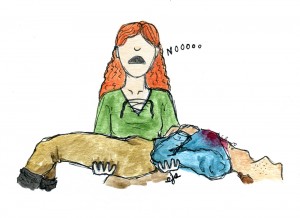 Once these tropes stop getting used so lopsidedly, there won’t be anything left for anyone to be angry about: they’ll just be patterns for structuring a story, not a relentless retelling of the same default assumptions about gender roles in game after game.
Once these tropes stop getting used so lopsidedly, there won’t be anything left for anyone to be angry about: they’ll just be patterns for structuring a story, not a relentless retelling of the same default assumptions about gender roles in game after game.
It’s worth mentioning that these gender stereotypes, while obviously demeaning to women, also caricature and pigeonhole men. Media representations of men tend to enforce traditional attitudes toward masculinity. Time after time in games, men are portrayed as muscle-bound, gruff, stoic, emotionally stunted–and above all, violent.
Of course, these concerns about the representation of men don’t “cancel out” concerns about the representation of women; an attitude of “you have a problem and I have a problem, so let’s just not solve either of them” accomplishes nothing. Using female protagonists can be a fruitful way to turn tropes on their heads, replacing dull, predictable, restrictive gender roles with something more interesting.
In short: female protagonists can help address a complex and thorny problem that is harmful to just about everyone, and it costs me nothing to be a part of that solution. In the end, it’s just one more reason to feature female lead characters.
Reason 3: It’s the right thing to do
 Have you heard the one about the dad who modded the Legend of Zelda: Wind Waker so his 3-and-a-half year old daughter could play as a girl? His name is Mike Hoye. Here was his reasoning, as told to Ars Technica: “I’m not having my daughter growing up thinking girls don’t get to be the hero.”
Have you heard the one about the dad who modded the Legend of Zelda: Wind Waker so his 3-and-a-half year old daughter could play as a girl? His name is Mike Hoye. Here was his reasoning, as told to Ars Technica: “I’m not having my daughter growing up thinking girls don’t get to be the hero.”
He didn’t just make that concern up out of thin air. A couple of years ago, EEDAR did a survey of hundreds of games from the most recent console generation. Of those that had gendered protagonists, they found that less than 3.6% had exclusively female protagonists, while more than 55% of them featured exclusively male protagonists:
Looking at a sample of 669 games that had protagonists with discernible genders, only 24 had exclusively female protagonists. Action had the most female protagonists, shooters had even less, and role-playing games had exactly one game with a female only hero. In all three genres, a little under 300 games gave the option of a female lead. That includes games where you can choose your gender or create your own character.
That isn’t an accident, either. Game publishers have recently been outed for quite deliberately refusing to take on games with female protagonists. To name one example: developer Jean Max-Moris recently related his experience with trying to find a publisher for the female-led title Remember Me.
By the time Remember Me was shown to prospective publishers, it was too late to change Nilin from a woman to a man, and this was enough to cause potential backers to abstain from publishing the game. “We had some that said, ‘Well, we don’t want to publish it because that’s not going to succeed. You can’t have a female character in games. It has to be a male character, simple as that,’” Moris told the Report.
Speaking personally as a game developer, I loathe the thought of contributing to a games culture in which there are hardly any female role models. I imagine a young girl sitting down to play games and rarely ever seeing that the hero is of her own gender. Over the years, I imagine her subconsciously internalizing that pattern. Girls don’t get to be the hero; boys get to be the hero. It gives me a sick feeling in my stomach. Why would I want to contribute to something so insidious? It’s just horrible. So that’s reason three: my conscience compels me.
Reason 4: It’s good business
I’m going to let you in on a little secret–and by “secret,” I mean “publicly available information that everyone should know but some folks apparently don’t.” Women are no longer just a “growing” demographic in the world of gaming; they’re actually very close to parity with men, right here and right now.
In 2012, the Entertainment Software Association conducted a demographic survey to determine who plays games. Among the results: 47% of game players are female and 48% of the most frequent game purchasers are female. (p. 3) So not only are there now roughly as many women in gaming as men, women are actually punching slightly above their weight in terms of buying games on a frequent basis. [Update: seven years later, and the ESA has taken out its gender breakdown on who the most frequent game purchasers are, but the ratio on who plays games remains surprisingly stable.]
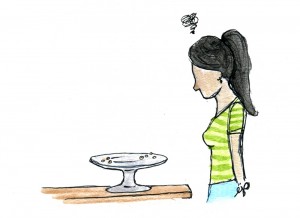 And yet, as we saw above, women are dramatically underrepresented when it comes to leading roles in games. Let’s recap those numbers for the sake of illustration: 47% of gamers are females; 48% of the most frequent game purchasers are females; and 3.6% of seventh generation console title protagonists are females. Does something about that seem a little off to you? Because it certainly does to me.
And yet, as we saw above, women are dramatically underrepresented when it comes to leading roles in games. Let’s recap those numbers for the sake of illustration: 47% of gamers are females; 48% of the most frequent game purchasers are females; and 3.6% of seventh generation console title protagonists are females. Does something about that seem a little off to you? Because it certainly does to me.
It does not take a rocket scientist to figure out that maybe we should be trying to appeal to nearly one-half of the gaming market. That is a whole hell of a lot of customers to just casually dismiss for the sake of lazy storytelling.
Conclusion
The numbers don’t lie. Women are every bit as much a part of the gaming ecosystem as men, and yet they receive only a small fraction of the leading roles. Is it any wonder that many women are upset? (I can assure the reader that men would not be happy in a world where male characters were constantly getting kidnapped or killed in games to set up the plot, and yet were actually heroes in only 1 out of every 30 titles.) This phenomenon is unrealistic, it makes no business sense, and–perhaps most importantly–it’s just plain wrong.
So I’m using female protagonists. After all, the stories we tell shape the way we think about the world. Life mirrors art; and I want my works to reflect well.
Special thanks to Foz Meadows and Kameron Hurley for writing thoughtful articles that have helped clarify my thinking on this matter, and to Elizabeth Simins for the great illustrations.
